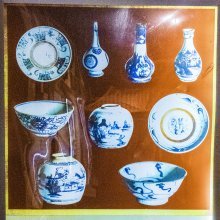Sima, Sīmā, Shima: 25 definitions
Introduction:
Sima means something in Buddhism, Pali, Hinduism, Sanskrit, the history of ancient India, Marathi, Jainism, Prakrit, Hindi, biology. If you want to know the exact meaning, history, etymology or English translation of this term then check out the descriptions on this page. Add your comment or reference to a book if you want to contribute to this summary article.
Sima has 25 English definitions available.
Images (photo gallery)
Languages of India and abroad
Sanskrit dictionary
[Deutsch Wörterbuch]
Source: Cologne Digital Sanskrit Dictionaries: Böhtlingk and Roth Grosses Petersburger WörterbuchŚima (शिम):—
--- OR ---
Śīma (शीम):—s. duḥ und su .
--- OR ---
Sima (सिम):—
--- OR ---
Sima (सिम):—2. so v. a. śima. aśvasya vā.inastva.i simāḥ śamyantu.śamyantīḥ [Vājasaneyisaṃhitā 23, 37. 42], wo das fem. śamyantīḥ irrig in den Text gekommen zu sein scheint; vgl. [Taittirīyasaṃhitā 5, 2, 12, 1.] nach [Mahīdhara] = sīmā so v. a. rekhā .
--- OR ---
Simā (सिमा):—1. (von 1. sima) adv. etwa allenthalben: simā pu.ū nṛṣūto asi [Ṛgveda 8, 4, 1.]
--- OR ---
Simā (सिमा):—2. f. pl. das aus den Mahānamnī - Versen gebildete Sāman [Aitareyabrāhmaṇa 5, 17.] [Pañcaviṃśabrāhmaṇa 13, 3, 3. 5, 3. 6, 5. 9, 3. 4.] Schol. zu [13, 4, 1.] simānāṃ niṣedhaḥ Name eines Sāman [LĀṬY.7,4,1. 12.] [Weber’s Indische Studien.3,244,a.]
--- OR ---
Sīmā (सीमा):—f. [UJJVAL.] zu [Uṇādisūtra 4, 150.] [Pāṇini’s acht Bücher 4, 1, 13,] [Scholiast] [Vopadeva’s Grammatik 4, 3.]
1) = sīman
1) in susīma . —
2) = sīman
2) [Amarakoṣa 2, 2, 19.] [Trikāṇḍaśeṣa 3, 3, 120.] [Hemacandra’s Abhidhānacintāmaṇi 962.] [Anekārthasaṃgraha 2, 341.] [Medinīkoṣa Manu’s Gesetzbuch 35.] [Halāyudha 2, 104.] [Yāska’s Nirukta 1, 7.] [Manu’s Gesetzbuch 8, 251.] sīmāṃ prati samutpanne vivāde [245.] vivāda [6.] [Oxforder Handschriften 263,a,19.] vādavinirṇaya [Manu’s Gesetzbuch 8, 253.] vinirṇaya [258. 266.] jñāna [249.] aviṣahyā [265.] sīmāṃ nī [252.] [Yājñavalkya’s Gesetzbuch 2, 152.] ni bandh [Manu’s Gesetzbuch 8, 255.] [Yājñavalkya’s Gesetzbuch 2, 228.] [Raghuvaṃśa 16, 2.] prāpta [Kathāsaritsāgara 54, 214.] suparīkṣitarakṣitāntasīmā (mṛgāṭavī) [KĀM. NĪTIS. 7, 36.] udadhiśyāmasīmāṃ dharitrīm [Śākuntala 48.] munikṛtāṃ sīmāmimāmujjhataḥ Grenze, Schranken [GOLĀDHY.] [CHEDYAK. 9.] [NALOD. 3, 28.] vipradharmoktisīmāṃ maryādām [Mahābhārata 1, 3251.] —
3) = sīman
3) [Hemacandra’s Anekārthasaṃgraha] [Medinīkoṣa] gatā vanyamṛgāḥ [Varāhamihira’s Bṛhajjātaka S. 91, 1.] sīmāmatītya cedrātrau vāsaḥ pravasanaṃ smṛtam Comm. zu [Kātyāyana’s Śrautasūtrāṇi 397, 3.] sasasyā [Harivaṃśa 3576.] susasyā [4016.] susīmā mahī [Rāmāyaṇa Gorresio 2, 35, 48.] grāmāṃsukṛṣṭasīmān [46, 5. 109, 22.] —
4) = sīman
5) [Medinīkoṣa] — Vgl. susīma .
Sanskrit, also spelled संस्कृतम् (saṃskṛtam), is an ancient language of India commonly seen as the grandmother of the Indo-European language family (even English!). Closely allied with Prakrit and Pali, Sanskrit is more exhaustive in both grammar and terms and has the most extensive collection of literature in the world, greatly surpassing its sister-languages Greek and Latin.
See also (Relevant definitions)
Starts with (+277): Cimai-alavanam, Cimai-ilantampalam, Cimai-kavikal, Cimai-kottaikala, Cimai-nayvirunci, Cimai-paccaimilakay, Cimai-pirappamaram, Cimai-tevataru, Cimaiccamanti, Cimaiccanal, Cimaiccarakku, Cimaiccirakam, Cimaiccunnampu, Cimaikkacan, Cimaikkalli, Cimaikkari, Cimaikkarppuram, Cimaikkarralai, Cimaikkati, Cimaikkattari.
Ends with (+86): Ageratina altissima, Aginabanda Reshima, Aglaia odoratissima, Ailanthus altissima, Albizia altissima, Albizia odoratissima, Aloysia gratissima, Amischotolype mollissima, Antahsima, Aristolochia fragrantissima, Arnebia hispidissima, Arthika-sima, Asima, Baddhasima, Bahyasima, Banakareshima, Bhadrasima, Bhinnasima, Castanea mollissima, Catuhsima.
Full-text (+139): Simavivada, Simalinga, Susima, Simavriksha, Seemaa-nirdhaaran-ayog, Simasandhi, Simabandha, Simakrishana, Simavada, Simadhipa, Simapaharin, Simantara, Simasamdhi, Simatva, Shima-o-tani-watari, Shima-shiraki, Simatas, Shima-hige-shiba, Shima-gomgura, Shima-atti.
Relevant text
Search found 38 books and stories containing Sima, Sīmā, Shima, Śimā, Śīma, Sīma, Śima, Simā, Seemaa; (plurals include: Simas, Sīmās, Shimas, Śimās, Śīmas, Sīmas, Śimas, Simās, Seemaas). You can also click to the full overview containing English textual excerpts. Below are direct links for the most relevant articles:
Buddhist Monastic Discipline (by Jotiya Dhirasekera)
Appendix III - The Concept of Sima (its origin and development)
Brihad Bhagavatamrita (commentary) (by Śrī Śrīmad Bhaktivedānta Nārāyana Gosvāmī Mahārāja)
Verse 2.4.47 < [Chapter 4 - Vaikuṇṭha (the spiritual world)]
Verse 2.4.62-63 < [Chapter 4 - Vaikuṇṭha (the spiritual world)]
Verse 2.4.191 < [Chapter 4 - Vaikuṇṭha (the spiritual world)]
Rig Veda (translation and commentary) (by H. H. Wilson)
Vinaya Pitaka (3): Khandhaka (by I. B. Horner)
A village boundary, etc. < [2. Observance (Uposatha)]
Allowance for three robes < [8. Robes (Cīvara)]
Seven on bringing < [7. Kaṭhina]
Manusmriti with the Commentary of Medhatithi (by Ganganatha Jha)
Verse 8.245 < [Section XL - Disputes regarding Boundaries]
Verse 8.255 < [Section XL - Disputes regarding Boundaries]
Verse 8.261 < [Section XL - Disputes regarding Boundaries]
Chaitanya Bhagavata (by Bhumipati Dāsa)
Verse 2.1.344 < [Chapter 1 - The Beginning of the Lord’s Manifestation and His Instructions on Kṛṣṇa-saṅkīrtana]
Verse 1.13.77-80 < [Chapter 13 - Defeating Digvijayī]
Verse 3.4.267 < [Chapter 4 - Descriptions of Śrī Acyutānanda’s Pastimes and the Worship of Śrī Mādhavendra]
